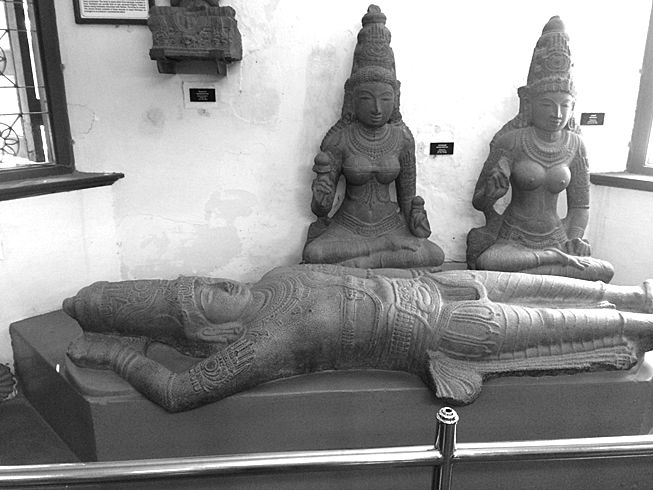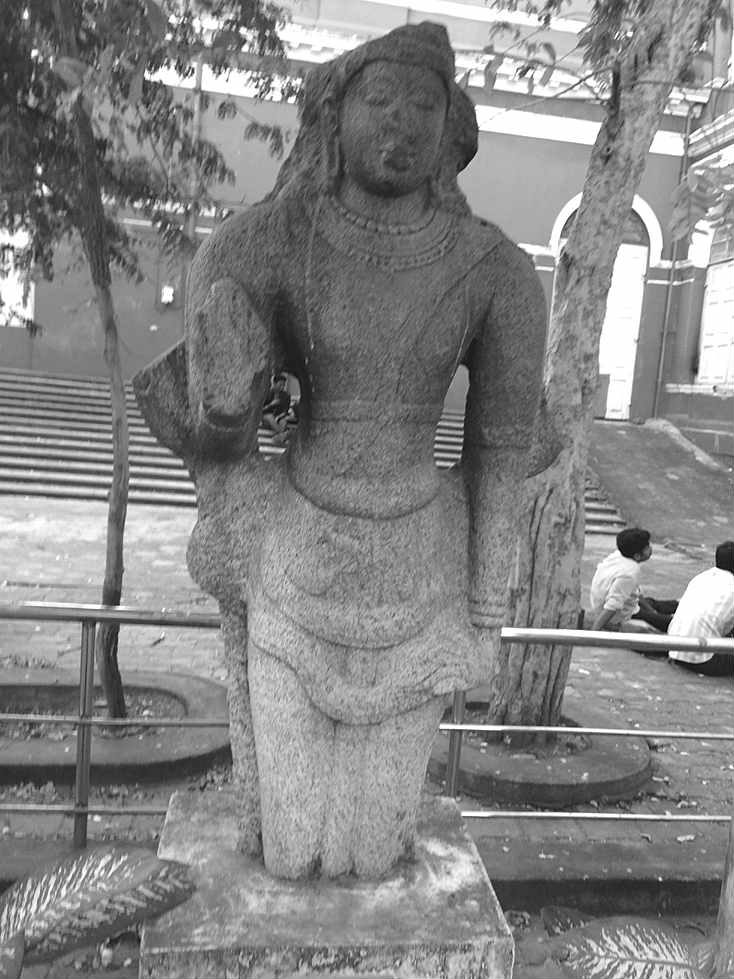Registered with the Registrar of Newspapers for India under R.N.I 53640/91
Vol. XXVII No. 4, June 1-15, 2017
The last word on our museums
– by N.S. Parthasarathy

Vinod Daniel, internationally known senior conservator in a recent interview highlighted the community’s responsibility in preserving the irreplaceable historical and cultural links with the past. He spoke of the role of museums in nation-building and of issues of conservation, maintenance and collection care. These observations and the series of articles on Chennai Museums that appeared in the last few issues of this paper provide occasion for a few observations on the state of our museums.
Fund availability is a critical requirement for upkeep and expanding collections. Our situation is not conducive to large revenues through entrance fees. A fee of Rs. 15 from domestic visitors is too meagre to meet upkeep and conservation expenses. Raising it could shut off many who cannot afford it, especially children and adults alike coming in from surrounding rural areas and from the urban poor. Rs. 200 for foreigners is hardly $ 4 dollars and could bear increase, but they must get a good deal in return which means large investment for a major face-lift backed by a strong campaign to attract the tourist segment.
It was heartening to know that two government-owned and managed museums did not experience any shortage of funds. In fact, the Egmore Museum has at present a major restoration plan on hand. Absence of shortage of funds is not necessarily the equivalent of sufficiency for raising the museums to world class. In contrast to the government-owned museums, the private managed Ramanujan museum is in abject condition and languishing towards ultimate disappearance. Shifting it to a prominent location, befitting the eminence of a world renowned mathematician and son of our State, would seem to be the answer. This museum, even today, attracts eminent mathematicians from abroad wishing to pay their respects to Ramanujan. it seems appropriate and urgent for somebody, State or otherwise, to acquire and/or take over this institution before the originals on display crumble beyond retrieval and are lost forever.
A dilemma confronting museums housed in buildings of special historical value is facing conflicting needs of heritage, modernisation and normal maintenance. Modernisation programmes are constricted by the layout and space of heritage buildings and the degree of care needed to avoid disturbing their structure and style. Remodelling the available space to showcase the exhibits to better advantage within the heritage-related constraints entails more capital than a green-field project in modern style in a new location. Within the complex, any modification has to be in harmony with the style and grace of the originals. That calls for large funds, whereas the normally adjudged sufficiency is for normal restoration and upkeep. If enough funds could be found to restore and raise the museum to world standards, the pay-back, direct and indirect, through greater tourist response, would justify the investment. In the meantime, to overcome the constraint of space for more effective display, perhaps a policy of rotational display, storing some exhibits by turns, could be considered. Such a policy is recommended in text books on museology and, we believe, followed in many well-known museums.

Marketing the museums to attract new and repeat attendance is a challenging aspect of museum management. Many innovative practices successfully adopted by museums abroad are worthy of emulation/adaptation by us. Dramatising aspects of ancient arts, culture and crafts through special programmes (recitals, enacting historical episodes, documentaries, lectures) could enhance visitor experience. Some of these practices are beneficially employed by private efforts dedicated to preservation of culture, such as the DakshinaChitra.
Customer service, another expression usefully borrowed from marketing gurus, calls for innovative unconventional methods, to suit our situation. Trained guides, provided free of charge to local visitor groups, for instance, could be considered to make the experience more meaningful to those thronging from rural areas to see the settha kaalayji (in Tamil, it literally means an exhibition of lifeless articles as opposed to usiru kaalayji meaning the zoo exhibiting living animals, birds). This is but one example of how the museum can demonstrate its sensitivity to an audience segment in need of special interpretative support. Observing the style adopted by the Ancient Tamil Exhibition, interpretative multi-media exhibitions supplementing the display of “abstract” artefacts could also be another way for bringing museums closer to the lay audience.
We must promote the museum culture. For instance, in Australia, a country that has a history of just 250 years, there are hundreds of museums, one in almost every town. A museum in every town seems impossible in our context; activities and projects that touch the common people command higher priority for fund allocation for Governments to remain in office. Spending on museums is assigned low priority under inevitable budget pressures. As an alternative, resorting to philanthropic funding gives rise to managerial issues. Who will manage the museum – the community that owns the valuable collections or the funding agencies? If both have to be involved in management, would the resultant organisational structure cramp autonomy and creativity? Delegating responsibility for the operation of a museum to a community non-profit organisation sounds good in theory but may be unworkable in practice.
Although our country has a rich and hoary past and has much to preserve and show, a museum in every district seems a distant dream.

